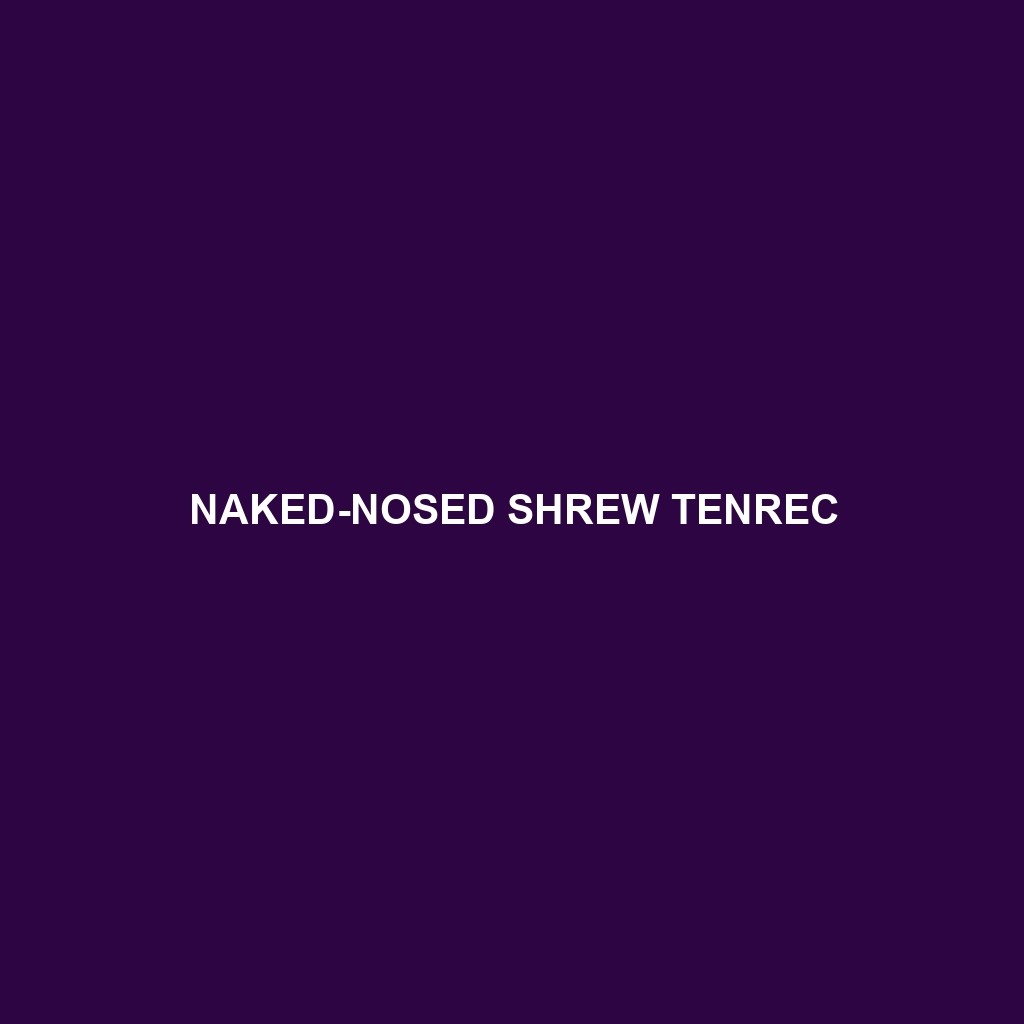Naked-Nosed Shrew Tenrec (Microgale gymnorhyncha)
The Naked-Nosed Shrew Tenrec, scientifically known as *Microgale gymnorhyncha*, is a small, insectivorous mammal endemic to the island of Madagascar. This elusive creature is part of the diverse Tenrecidae family, which showcases an array of fascinating morphological and behavioral adaptations.
Physical Characteristics
Size:
The Naked-Nosed Shrew Tenrec is a diminutive mammal, typically ranging between 10 to 15 centimeters in length, with a slender, elongated body that allows it to navigate its forest floor habitat effectively.
Coloration:
Its fur is generally a dark brown or grayish hue, providing excellent camouflage amidst the leaf litter of the forest floor. The underbelly may be slightly lighter in color.
Special Features:
The most distinct feature of the Naked-Nosed Shrew Tenrec is its hairless, pinkish nose, which is highly sensitive and adapted for foraging. Unlike other tenrecs, this particular species lacks the protective spines commonly associated with the family, instead boasting soft fur that aids in its stealthy movements.
Behavior
Social Interactions:
Naked-Nosed Shrew Tenrecs are primarily solitary animals, coming together only for mating purposes. They communicate through a series of high-pitched squeaks and scents, using their keen sense of smell to detect pheromones and territorial markings left by others.
Feeding Habits:
As insectivores, their diet consists mainly of insects, worms, and other small invertebrates. They use their sensitive noses to root through leaf litter and soil, detecting prey with remarkable precision.
Ecological Roles:
These tenrecs play a crucial role in controlling insect populations and contributing to the aeration of the soil through their foraging activities. They are an integral part of the ecosystem, supporting the delicate balance of their forest habitats.
Habitat
Natural Habitat:
The Naked-Nosed Shrew Tenrec is predominantly found in the moist, tropical forests of Madagascar. They prefer environments with ample ground cover, such as leaf litter and fallen logs, which provide both food and protection from predators.
Adaptations:
Adaptations of the Naked-Nosed Shrew Tenrec include its acute sense of smell, ideal for hunting in the dense forest understory, and its nimble, elongated body, which allows it to maneuver through narrow crevices and dense foliage with ease.
Conservation Status
Current Status:
Due to habitat destruction and fragmentation, primarily from agricultural expansion and deforestation, the Naked-Nosed Shrew Tenrec is facing increasing threats. Currently, it is classified as Near Threatened on the IUCN Red List, highlighting the need for conservation efforts to protect its natural habitat.
Fun Facts
The Naked-Nosed Shrew Tenrec is one of over 30 species within the genus *Microgale*, showcasing the incredible biodiversity of Madagascar.
Unlike many other mammals, tenrecs, including the Naked-Nosed Shrew Tenrec, do not maintain a constant body temperature and can enter torpor, a state of decreased physiological activity, to conserve energy.
This species is a prime example of convergent evolution, where unrelated species evolve similar traits; it bears a striking resemblance to shrews found in other parts of the world despite being unrelated.
Incorporating this detailed description into your website will provide your audience with a comprehensive understanding of the Naked-Nosed Shrew Tenrec, highlighting its unique attributes and the importance of its conservation.
